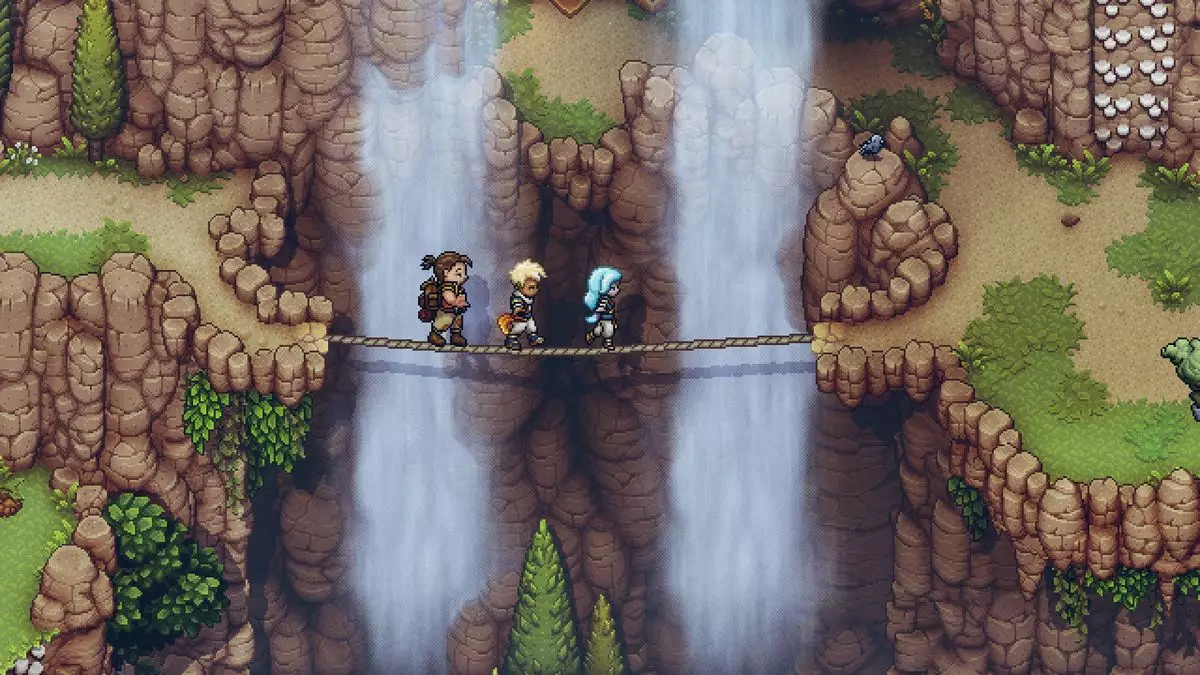The indie gaming landscape has seen a remarkable upsurge of titles that hark back to the golden years of gaming, particularly the vibrant 2D era. Sea of Stars, developed by Sabotage Studio, stands out as a compelling homage to the classic JRPGs that shaped the genre. Following the success of The Messenger, which itself skillfully blended elements from beloved titles of the past, Sea of Stars draws from a rich tapestry of influences while adding its own contemporary twist. Game director Thierry Boulanger highlights Nintendo as a pivotal inspiration, representing not just the aesthetics but also the core mechanics that have continued to shape games long after their original release.
In a recent conversation, Boulanger articulated the profound impact that Nintendo had on Sabotage Studio’s creative direction. He reflected on the profound lessons learned from classic Nintendo titles, particularly those released during the ’80s and ’90s. This era produced games that are widely revered today for their design philosophies, showcasing an exemplary balance of challenge and enjoyment. Boulanger’s assertion that “every single game ever” serves as a learning experience reflects the adaptive and inquisitive nature of indie developers who strive to imbue their creations with the timeless appeal that classic games emanate.
Renowned for their relentless innovation and storytelling prowess, Nintendo’s titles present an almost endless reservoir of techniques related to controls, pacing, and level design. These are the attributes that indie developers often aim to replicate or reinterpret. The creative approach employed by Sabotage Studio illustrates a marriage of nostalgia and modern gaming sensibilities, inviting players to experience the past with a fresh perspective.
Sea of Stars stands as a testament to the importance of blending historical gaming artistry with new ideas. While it clearly pays homage to titans like Chrono Trigger and Secret of Mana, it also reinvigorates the genre with co-op play—a significant evolution that enhances community interaction in a traditionally single-player format. This modern innovation does not detract from its nostalgic essence; rather, it complements it. The ability to share experiences with friends allows for a richer, more dynamic gameplay environment that resonates with both new players and seasoned veterans.
The Messenger’s dual-realm mechanic, which allows players to transition between 8-bit and 16-bit visuals, is another brilliant example of how Sabotage Studio captures the essence of retro gaming while pushing creative boundaries. This juxtaposition not only honors the past but also emphasizes the importance of gameplay fluidity, showcasing a thoughtful evolution rather than a mere rehash.
As indie game development continues to flourish, Sea of Stars epitomizes a promising trend where developers draw inspiration from gaming history while simultaneously crafting new experiences. Boulanger’s insights into the creative process highlight an important narrative in the gaming industry—one where the legacy of giants like Nintendo can ignite fresh ideas. For both the players nostalgic for the classics and newcomers exploring the genre, Sea of Stars provides an experience that is both reminiscent and innovative. As this trend continues, it opens the door for even more imaginative explorations in the world of indie JRPGs, reaffirming that the heart of gaming lies in the ability to rediscover and redefine what came before.

